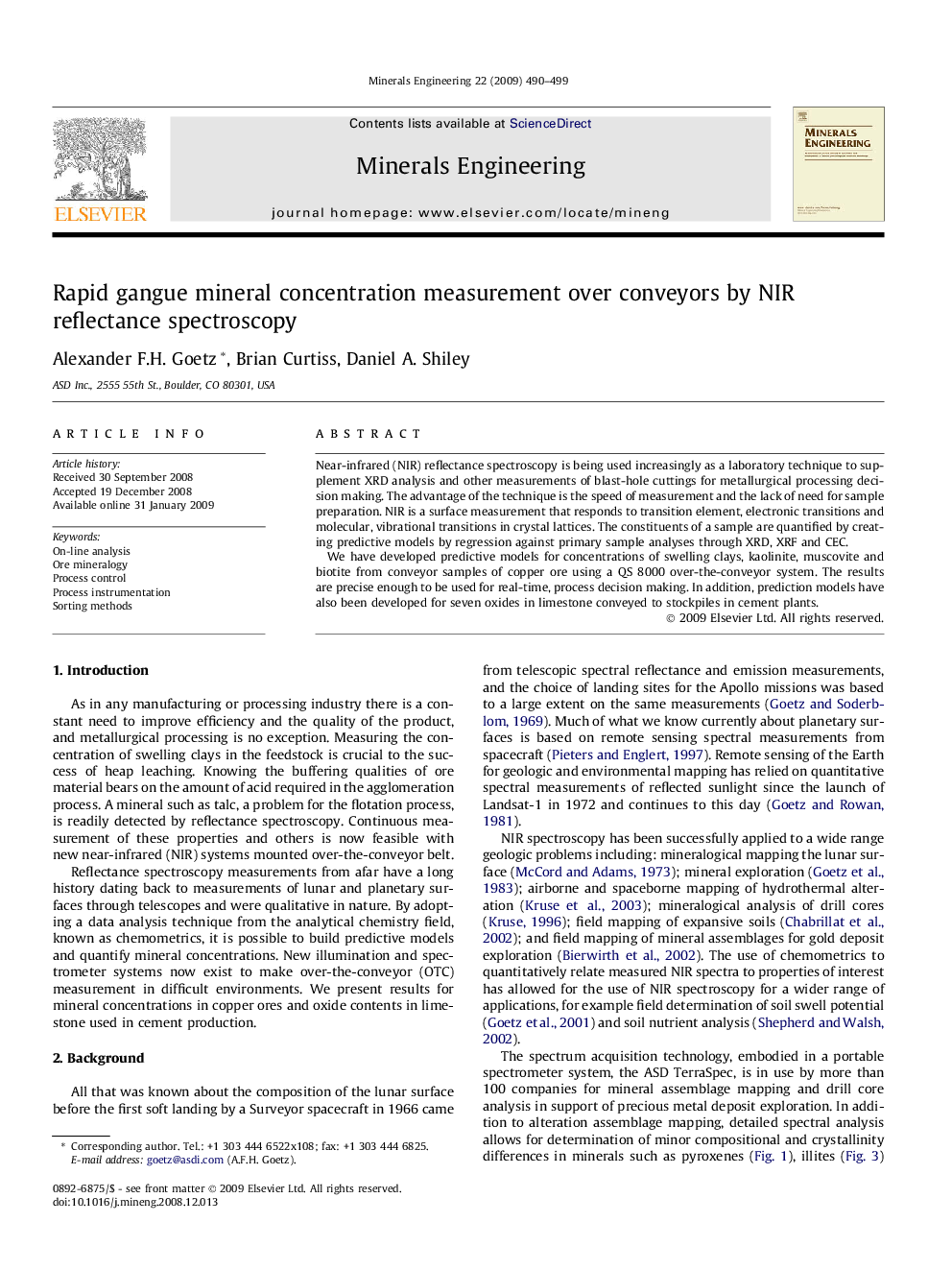| Article ID | Journal | Published Year | Pages | File Type |
|---|---|---|---|---|
| 234345 | Minerals Engineering | 2009 | 10 Pages |
Near-infrared (NIR) reflectance spectroscopy is being used increasingly as a laboratory technique to supplement XRD analysis and other measurements of blast-hole cuttings for metallurgical processing decision making. The advantage of the technique is the speed of measurement and the lack of need for sample preparation. NIR is a surface measurement that responds to transition element, electronic transitions and molecular, vibrational transitions in crystal lattices. The constituents of a sample are quantified by creating predictive models by regression against primary sample analyses through XRD, XRF and CEC.We have developed predictive models for concentrations of swelling clays, kaolinite, muscovite and biotite from conveyor samples of copper ore using a QS 8000 over-the-conveyor system. The results are precise enough to be used for real-time, process decision making. In addition, prediction models have also been developed for seven oxides in limestone conveyed to stockpiles in cement plants.
